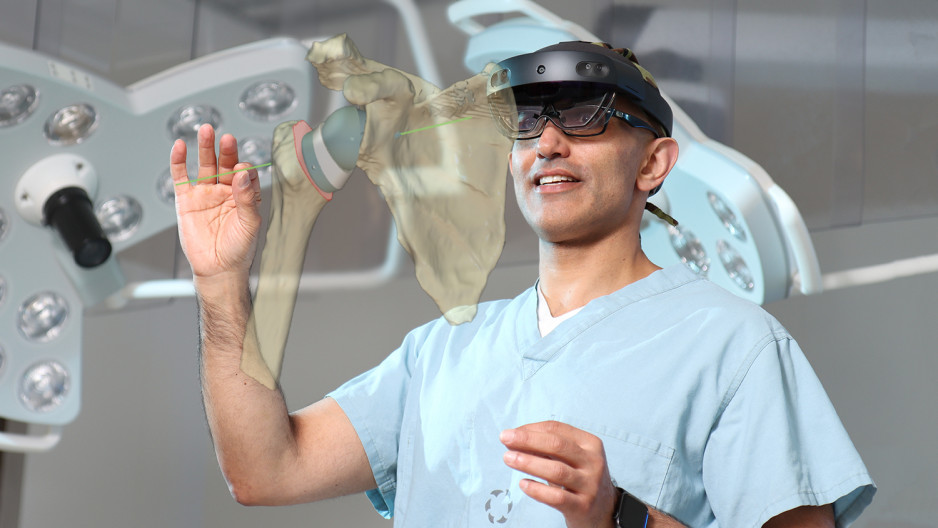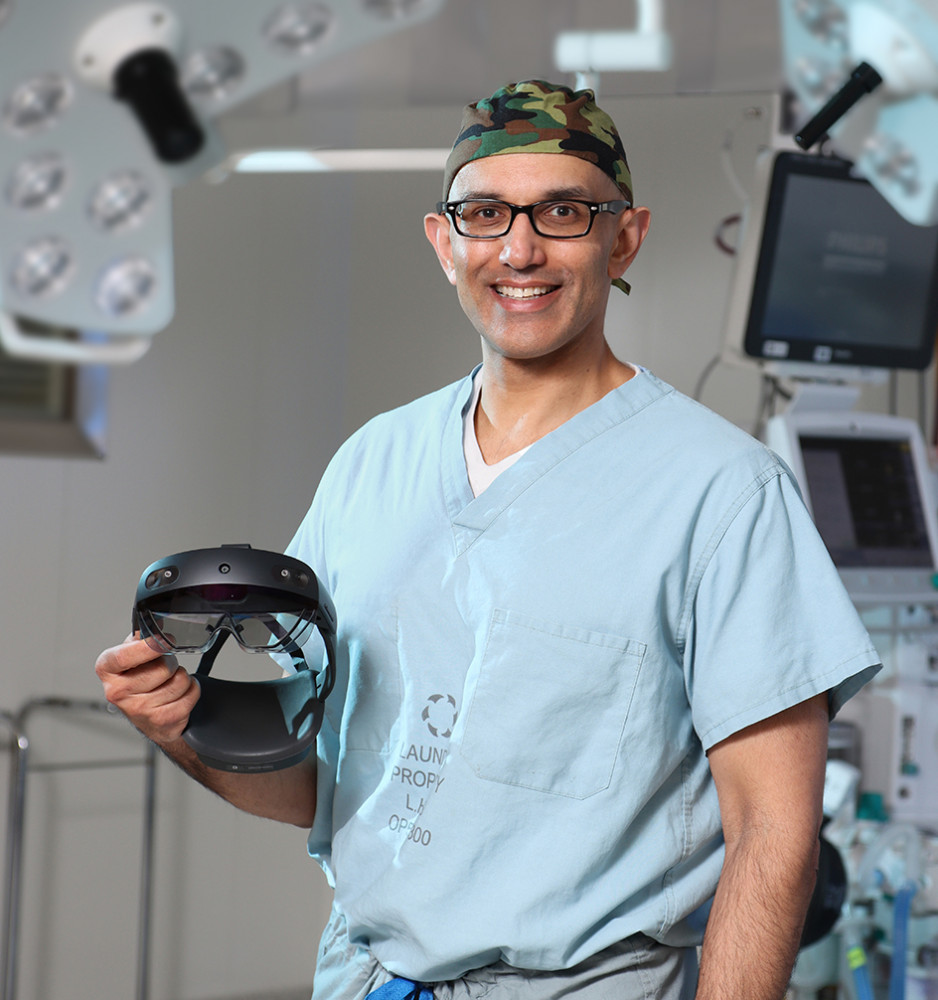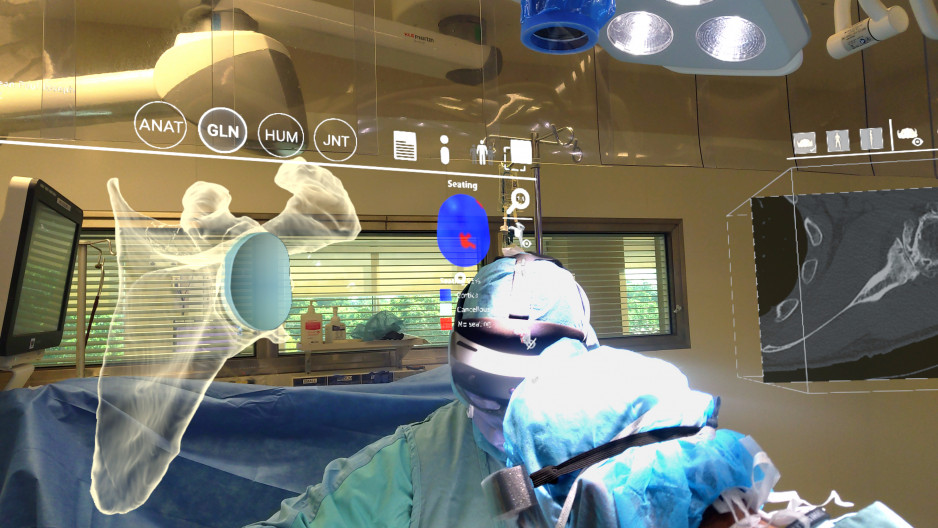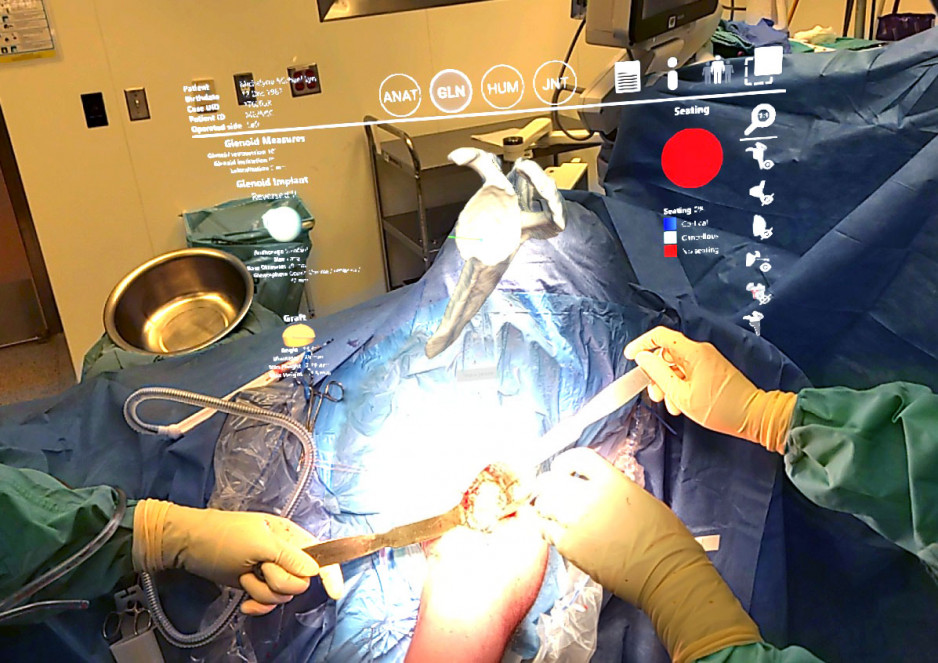Hovering holograms hone surgeons' skills
Surgeon Dr. George Athwal at St. Joseph’s Health Care London was the first in Canada and second in the world to use revolutionary mixed reality technology as a tool in shoulder replacement surgery.
At the Roth | McFarlane Hand and Upper Limb Centre at St. Joseph’s Hospital, orthopedic surgeon Dr. George Athwal has become a Canadian pioneer in the development and use of digital 3D holograms to enhance surgical precision for shoulder replacement patients, which is expected to reduce complications and improve outcomes.
Digital holograms are a revolution in the field of interactive ‘mixed reality’ technology, which is emerging as an exciting new tool in operating rooms. Part of a team who developed the technology for shoulder replacement surgery, Dr. Athwal was the first surgeon in Canada to perform a mixed reality shoulder replacement, and second in the world.
Mixed reality is the “mix” of immersive computer-generated environments and the “real” physical environment. By pairing hologram technology with pre-operative planning software, Dr. Athwal and his team gave birth to 3D holograms that can guide the most intricate surgical manoeuvres as they happen during shoulder replacement surgery.
“It is a groundbreaking tool that allows me to replicate the surgical plan very precisely.”
Wearing a specially-designed headset, Dr. Athwal uses verbal commands and hand gestures – moving his hands through the air – to manipulate a digital 3D hologram of the patient’s anatomy and the metallic implant, which is based on a CT scan of the patient’s bones. The technology is used for pre-surgery planning and in the operating room during the actual surgery. Dr. Athwal has the hologram hovering – or rather parked in space – within reach for reference as he operates.
“It is a groundbreaking tool that allows me to replicate the surgical plan very precisely,” says Dr. Athwal. “I am able to see issues with impingement of the joint replacement and ensure the best fit for the implant, which will hopefully provide the best outcome for the patient.”
Dr. Athwal worked with Stryker, a manufacturer of shoulder implants, and Microsoft Corporation, manufacturer of the HoloLens 2 – a holographic headset – to develop the mixed reality shoulder replacement technique.
There are now surgeons in multiple countries using this tool, says Dr. Athwal, who has since performed numerous surgeries using the technology and is in demand to provide demonstrations world-wide.
Interest in mixed reality technology to enhance surgery is starting to take flight, adds Dr. Athwal. “It’s really helping physicians do a precise and fine-tuned shoulder replacement, which will hopefully result in a lower complication rate and therefore a higher success rate and increased longevity of the newly replaced joint. We all want the best for our patients. We want them to have the most positive results and this technology adds another layer to ensure that happens.”
At the Roth | McFarlane Hand and Upper Limb Centre, a world-renowned centre of excellence in education, research, diagnosis and treatment of complex conditions of the hand, wrist, elbow and shoulder, the technology is available for patients needing shoulder replacements (arthroplasty), such as total shoulder arthroplasty or reverse shoulder arthroplasty.



